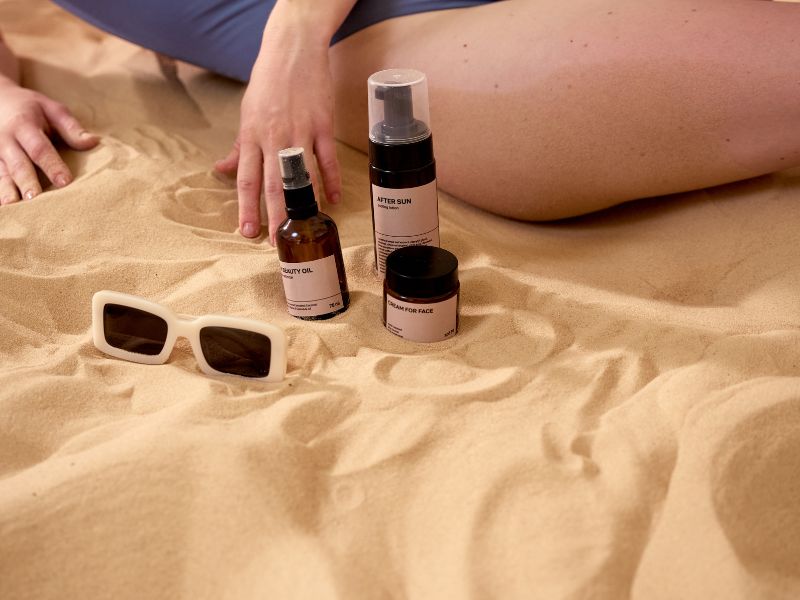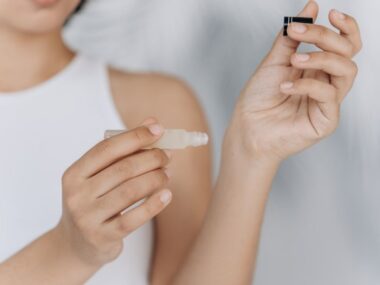With the rising awareness of the importance of sun protection, travellers are increasingly conscious of carrying sunscreen, especially in its convenient spray form. However, navigating airline regulations on aerosols and liquids can be tricky. Whether you’re planning a beach vacation, a ski trip, or simply want to have sunscreen on hand during a long flight, understanding the rules around carrying sunscreen sprays can save you hassle at airport security. This article will provide a comprehensive guide on everything you need to know about bringing sunscreen spray on a plane, including regulations, safety considerations, and practical tips for travellers.
Understanding TSA Regulations for Sunscreen Spray
The Transportation Security Administration (TSA) in the United States enforces strict guidelines when it comes to liquids, aerosols, gels, and creams. Sunscreen, whether in spray, lotion, or cream form, falls under these regulations. According to the TSA’s 3-1-1 liquids rule, travellers can bring liquids and aerosols in containers no larger than 3.4 ounces (100 millilitres) in their carry-on luggage. All containers must fit into a single, quart-sized clear plastic bag, and each passenger is allowed only one such bag.
Sunscreen spray, as an aerosol product, is regulated in the same way as other liquids, with a few additional restrictions specific to its spray nature:
- Size Limit: Sunscreen spray bottles over 3.4 ounces are not permitted in carry-on luggage, but you can pack larger containers in checked luggage.
- Pressure Concerns: Aerosol products are also regulated due to the potential for pressure changes during flights. Most aerosol containers are designed to withstand normal aircraft cabin pressure, but travellers are advised to pack them in checked luggage to avoid potential issues.
While TSA regulations are a starting point, it’s essential to also check guidelines specific to the airline you’re flying with and the regulations in your destination country, as these can vary.
The Importance of Sun Protection During Travel
Sun protection is an essential part of skincare, regardless of the season or travel destination. The sun’s UV rays can penetrate aeroplane windows, especially at higher altitudes where there is less atmosphere to filter out harmful radiation. Studies show that during a flight, pilots are exposed to a significant amount of UV radiation, equivalent to a 20-minute tanning bed session per hour in flight.
Applying sunscreen during flights, especially if you have a window seat, helps protect your skin from UVA and UVB rays. However, not all sunscreens are equally effective or safe to bring on board. When selecting a sunscreen spray for travel, look for broad-spectrum options with an SPF of 30 or higher to ensure optimal protection.
Safety Concerns with Aerosol Sunscreen on a Plane
Aerosol products, including sunscreen sprays, are considered potentially hazardous on planes because of their pressurized contents. When exposed to lower pressures at high altitudes, aerosol cans can sometimes become unstable. Although rare, this instability has led to incidents where containers have burst or leaked. For this reason, some airlines may discourage bringing aerosol sprays in carry-on bags, even if they meet the size requirements.
Additionally, certain chemical ingredients in aerosol sunscreens, such as alcohol and other volatile organic compounds (VOCs), are flammable. This factor raises additional safety concerns, as pressurized and flammable items are generally not recommended in aircraft cabins. The TSA allows small amounts of these products under strict limits, but checking individual airline policies is always a good idea.
Sunscreen Spray in Checked Luggage
If you want to bring a full-size sunscreen spray, packing it in checked luggage is generally the best option. Checked luggage has different restrictions than carry-on baggage, and aerosol cans up to 18 ounces per container are typically allowed, provided the combined volume of all aerosols does not exceed 70 ounces. This allows travellers more flexibility to pack larger amounts of sunscreen for extended trips.
To ensure the sunscreen doesn’t leak, place it in a sealable plastic bag or wrap it in plastic. Packing it in the centre of your suitcase, surrounded by clothes, can add an extra layer of protection and reduce the chance of accidental leakage.
Pros and Cons of Sunscreen Sprays for Travel
Sunscreen sprays are undoubtedly convenient, but they have specific pros and cons when it comes to air travel. Let’s take a closer look at some of the benefits and drawbacks:
- Pros:
- Convenience: Sunscreen sprays are easy to apply, especially for hard-to-reach areas like the back and shoulders. They are also quicker to apply than lotions, making them ideal for quick applications during a trip.
- Lightweight Texture: Many people find sprays less greasy than lotion sunscreens, which can be a benefit if you’re reapplying frequently.
- Minimal Residue: Spray sunscreens tend to dry quickly, which reduces the risk of staining clothes or surfaces in tight spaces like aeroplane cabins.
- Cons:
- Limited in Carry-On: Due to TSA liquid restrictions, you may only bring small spray containers in your carry-on, which can be insufficient for longer trips.
- Inhalation Risks: Spraying in confined areas like aeroplanes can lead to accidental inhalation of sunscreen particles, which may not be safe, especially in aerosol formulations.
- Environmental Concerns: Aerosol sprays often contain propellants that can harm the environment, and some formulas are restricted in environmentally sensitive locations like coral reefs due to certain chemicals.
For travellers who prefer spray sunscreen, carrying a small TSA-approved container in their carry-on and packing a full-size bottle in checked luggage is an optimal compromise.
Alternative Sunscreen Options for Air Travel
If you want to avoid the potential hassles of bringing a sunscreen spray on a plane, there are several other effective and travel-friendly sunscreen options:
- Stick Sunscreens: Stick sunscreens are solid, eliminating the need to worry about TSA liquid restrictions. They are compact, easy to apply, and ideal for protecting sensitive areas like the face and neck.
- Sunscreen Lotions: While not as convenient as sprays, lotions are widely available in TSA-compliant sizes. Many brands offer travel-size sunscreen lotions in 3-ounce containers or smaller, making them easy to pack in a carry-on.
- Powder Sunscreens: These sunscreens come in a powdered form, making them easy to carry without counting as a liquid. They’re particularly suitable for touch-ups and are often formulated with SPF and other skin-friendly ingredients.
These alternatives not only comply with airline regulations but also avoid many of the safety concerns associated with aerosol products.
International Regulations for Sunscreen Spray
Travellers flying internationally should also be aware of different regulations for carrying aerosols, as these can vary by country. For instance:
- European Union (EU): EU regulations largely align with TSA standards, allowing 100-milliliter containers in carry-on bags. However, some European airlines may have stricter policies regarding aerosol cans, especially in carry-ons.
- Australia: Australia permits aerosol products in carry-on luggage under 100 millilitres, though their airlines often limit or discourage flammable items, including some sunscreen sprays.
- Asia: Policies vary widely, with some Asian airlines being more restrictive about aerosol products in general. Always check the airline and country-specific guidelines when flying to or within Asia.
By planning and researching the specific requirements for your destination, you can avoid unnecessary sunscreen confiscations or complications.
Practical Tips for Traveling with Sunscreen Spray
Travellers can follow a few practical tips to make bringing sunscreen spray on a plane easier and more efficient:
- Opt for Miniature or Travel-Sized Bottles: Many sunscreen brands now offer travel-size options specifically for air travel. These products comply with TSA and international guidelines and are ideal for short trips or weekend getaways.
- Consider Refilling: Some travellers prefer to refill small, reusable spray bottles with their favourite sunscreen to stay within the TSA limit. Be sure to label the bottle clearly and ensure it doesn’t contain more than 3.4 ounces.
- Double-Bag Aerosols: For added security against leaks, place the aerosol sunscreen in a double layer of ziplock bags. This is especially helpful for spraying sunscreens, which may be prone to leakage under pressure.
- Check Airline Policies: It’s always a good idea to check your airline’s specific guidelines on carrying aerosols, as some may have more stringent restrictions than TSA regulations.
- Be Ready for Inspections: Because aerosols can be flagged during security checks, be prepared for additional scrutiny. Remove your liquid bag promptly at security checkpoints to streamline the process.
Conclusion
Bringing sunscreen spray on a plane is allowed but comes with specific regulations and limitations due to TSA and international guidelines. Understanding these rules, as well as the safety and environmental concerns surrounding aerosol sunscreens, can help you make an informed decision about the best way to travel with sun protection. Whether you opt for a travel-size spray, switch to a lotion or stick format, or pack a full-size bottle in checked luggage, maintaining sun protection while travelling is essential. By planning and choosing the right sunscreen product for your needs, you can enjoy peace of mind knowing you’re prepared to keep your skin safe wherever your journey takes you.






